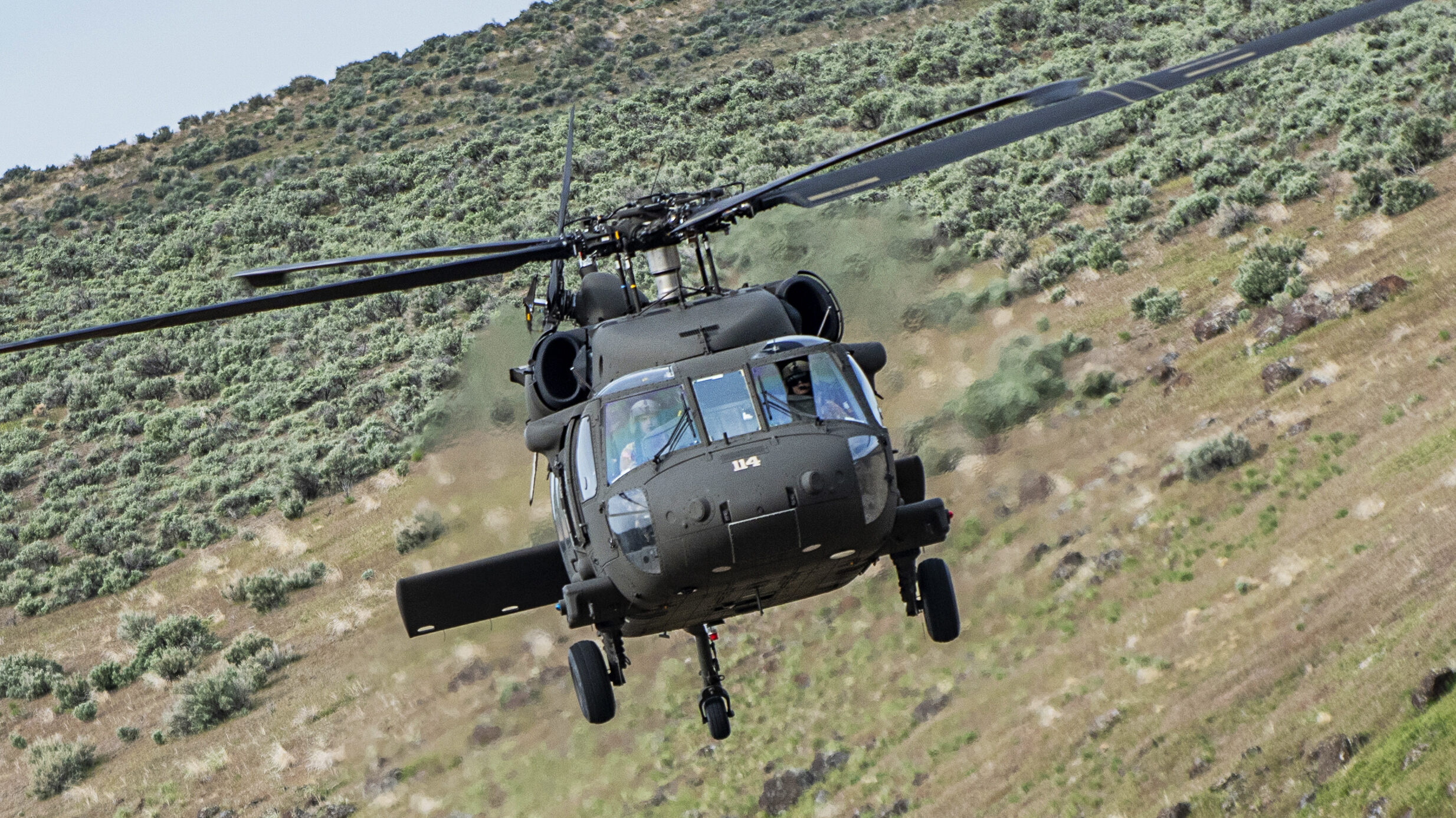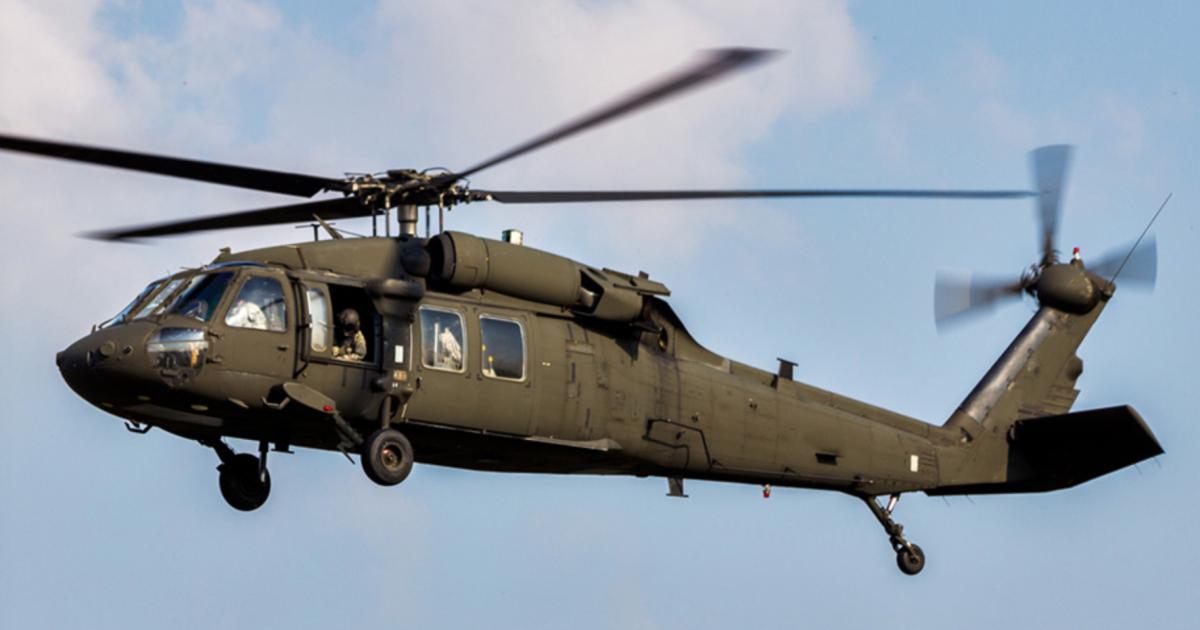Unveiling the Trick Features and Abilities of the UH-60 Helicopter
The UH-60 helicopter stands as a testimony to the development and engineering expertise of its makers. What genuinely sets this helicopter apart are its innovative avionics and navigation systems, ensuring precision and precision in every goal. As we delve much deeper into the crucial features and capacities of the UH-60 helicopter, prepare to be surprised by its unmatched performance and the myriad of opportunities it brings to the table.
Engine and Performance
The UH-60 helicopter flaunts an excellent engine and performance, showcasing its abilities in various goal scenarios. Equipped with two General Electric T700-GE-701D turboshaft engines, each creating 1,994 horsepower, the UH-60 can reaching an optimum speed of 183 knots (333 km/h) and a series of 363 nautical miles (673 km) This degree of power makes sure the helicopter's dexterity and speed, allowing it to navigate promptly in vital scenarios.
Moreover, the UH-60's engines are created to give exceptional power-to-weight ratio, making it possible for the helicopter to carry a maximum exterior load of 9,000 pounds (4,082 kg) This payload ability makes it suitable for transporting troops, equipment, and supplies, making the UH-60 a reliable possession in battle and calamity alleviation procedures.
In terms of efficiency, the UH-60 includes advanced innovations and attributes to boost its ability to move and stability. Its four-bladed primary rotor system, combined with a four-bladed tail blades, offers outstanding lift ability and exact control, ensuring secure and smooth trip also in tough settings.
In Addition, the UH-60's engine is geared up with an automatic flight control system, which assists the pilots in preserving ideal flight specifications, reducing pilot workload and boosting safety and security. With its durable engine and excellent efficiency, the UH-60 helicopter is a dependable and flexible platform for completing a large variety of objectives.
Avionics and Navigating Equipment
Avionics and navigating systems play a critical duty in making sure the UH-60 helicopter's operational performance and security. These systems are liable for supplying the pilots with necessary info and devices to browse through different trip conditions and surfaces.
The UH-60 helicopter is furnished with advanced avionics systems that enhance situational recognition and enable specific navigating. One of the vital functions is the Integrated Avionics Suite (IAS), which consists of a digital map display, a trip administration system, and a data transfer system. The electronic map display gives the pilots with real-time info concerning their placement, route, and bordering airspace. The trip management system helps in planning and executing trip paths, while the data transfer system enables the exchange of information with various other airplane and ground stations.
Along with the IAS, the UH-60 helicopter is geared up with a navigating system that makes use of various sensing units, such as GPS, inertial navigating systems, and Doppler radar - uh-60. These sensing units collaborate to offer exact and trustworthy positioning, elevation, and rate details, also in tough climate condition or GPS-denied environments

Furthermore, the UH-60 helicopter is furnished with a Traffic Accident Evasion System (TCAS) and a Surface Understanding and Warning System (TAWS) The TCAS signals the pilots to prospective airplane crashes and offers assistance to avoid them, while the TAWS warns the pilots of possible surface dangers and provides surface evasion assistance.
Mission Capabilities and Adaptability
With its sophisticated avionics and navigating systems ensuring functional efficiency and security, the UH-60 helicopter showcases amazing mission capabilities and convenience. Made to satisfy the demands of numerous missions, the UH-60 can performing a variety of jobs, making it a very useful asset to armed forces procedures worldwide.
Among the crucial objective capacities of the UH-60 is its capability to carry out troop transportation. With a sizable cabin and seats for up to 11 combat-equipped soldiers, the helicopter can quickly move employees to and from the field of battle. This capability allows efficient and fast implementation of soldiers, enhancing functional flexibility and responsiveness.
In enhancement to my latest blog post troop transportation, the UH-60 masters casualty emptying (CASEVAC) missions. Geared up with clinical equipment and cots, the helicopter can offer essential medical assistance to damaged workers. Its ability to quickly leave casualties from remote or dangerous areas can substantially improve the chances of survival and lower the time it requires to obtain medical treatment.
Additionally, the UH-60 is fit for search and rescue (SAR) procedures. Geared up with sophisticated sensors and communications systems, the content helicopter can swiftly locate and extract individuals in distress, whether on land or at sea. Its flexibility in different environments and climate condition makes it a trusted asset for SAR missions.
Moreover, the UH-60 can be furnished with different weapon systems, allowing it to supply close air assistance and involve targets on the ground. This ability improves the helicopter's efficiency in battle circumstances and strengthens its role as a multi-purpose platform.
Defensive Systems and Survivability
Enhancing its capacity to hold up against hazards and make certain the safety and security of its team, the UH-60 helicopter is geared up with sophisticated defensive systems and survivability features. These systems are developed to protect the airplane and its occupants from a vast array of potential threats come across throughout armed forces operations.
Among the crucial defensive systems on the UH-60 is the Usual Projectile Warning System (CMWS) This system finds and tracks incoming projectiles, supplying the team with prompt notifies and enabling them to take suitable incredibly elusive activities. In addition, the helicopter is geared up with an advanced infrared countermeasures system, which can jam the advice systems of heat-seeking rockets, enhancing the airplane's possibilities of survival.
To further enhance survivability, the UH-60 includes a crashworthy structure and seats system. This layout is intended to lower the threat of injuries to the staff in case of a crash or tough landing. Furthermore, the helicopter is geared up with self-sealing gas tanks, which he said can assist protect against gas leaks and fires in case of a hit.
An additional key function contributing to the UH-60's survivability is its repetitive flight control system - uh-60. This system gives backup controls in instance the primary system stops working, enabling the pilot to maintain control of the aircraft and safely land it
Upkeep and Assistance Demands
The UH-60 helicopter requires regular maintenance and support to ensure its ideal efficiency and functional preparedness. As a complex airplane, it is vital to follow a systematic upkeep program to identify and rectify any type of possible concerns. The upkeep requirements for the UH-60 consist of scheduled evaluations, precautionary upkeep, and repair services. These tasks are executed by trained maintenance personnel who comply with stringent standards and treatments detailed by the supplier.
Routine examinations are carried out to examine the general condition of the helicopter and identify any signs of wear and tear. This includes examining the engines, blades systems, avionics, and various other vital elements. Preventive maintenance jobs, such as lubricating relocating parts, replacing filters, and examining electrical systems, are additionally done to stop tools failing and guarantee the helicopter's reliability.
Along with routine upkeep, the UH-60 calls for continuous support in regards to logistics and extra parts management. A durable supply chain is necessary to make certain the accessibility of spare components, tools, and equipment needed for repair and maintenance. This involves correct stock monitoring, procurement, and coordination in between maintenance systems and providers.
To sustain the UH-60 fleet successfully, an extensive maintenance and assistance infrastructure is developed. This consists of maintenance facilities, training programs for maintenance employees, and technical assistance from the producer. The goal is to lessen downtime and guarantee that the helicopters are always in a state of operational preparedness, prepared to accomplish their goal needs.
Conclusion
In verdict, the UH-60 helicopter is an exceptional airplane with remarkable engine performance, advanced avionics and navigating systems, and versatile mission capabilities. In general, the UH-60 helicopter stands as a extremely qualified and trustworthy aircraft in armed forces and private applications.

To better improve survivability, the UH-60 includes a crashworthy framework and seating system.In verdict, the UH-60 helicopter is an exceptional aircraft with outstanding engine performance, advanced avionics and navigation systems, and functional mission capacities.